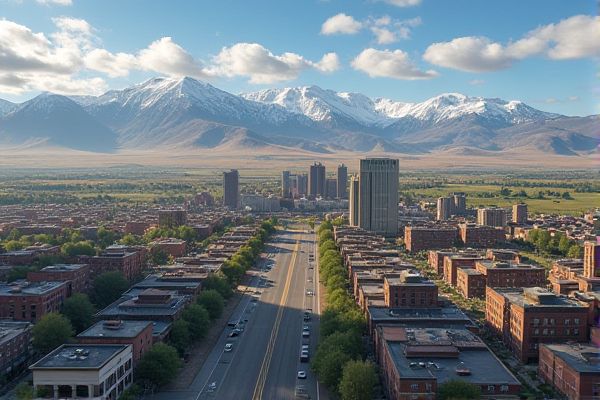
Safety and crime rates in Montana: Lower crime rates compared to national average. Rural areas generally safer than urban. Wildlife encounters are a safety concern. Carrying bear spray recommended in certain areas. Property crime higher in some cities. Meth-related incidents have increased recently. Community policing prevalent across the state. Shootings are higher in urban areas. Violent crime rate is relatively low. Neighborhood watch programs widely active.
Lower crime rates compared to national average.
Montana does not have lower crime rates compared to the national average for violent crimes, but it does for some specific types of crimes. In 2022, Montana reported a higher rate of violent crime (417.9 per 100,000 residents) than the national average (380.3 per 100,000 people). However, it had a lower murder rate (4.5 per 100,000 residents) and a lower property crime rate (1,918.6 per 100,000 residents) compared to the national average (1,952.8 per 100,000 people). For more in-depth analysis, visit the detailed report on Crime Statistics website.
Rural areas generally safer than urban.
Rural areas in Montana are generally safer than urban areas, with smaller communities like Whitefish, Libby, and Bigfork reporting significantly lower rates of violent and property crime compared to the state's urban centers. For a closer look at these statistics and what makes these places safe, you can explore further information on Safest Cities in Montana, which delves into the safety dynamics of Montana's diverse neighborhoods.
Wildlife encounters are a safety concern.
Montana experiences a high number of wildlife-vehicle collisions, with nearly 30,000 incidents reported between 2008 and 2020, resulting in significant damages and emphasizing the need for drivers to be vigilant. This is especially crucial during the fall when Deer-Vehicle Collisions are more common. Staying attentive and aware of the surroundings can help prevent such accidents, ensuring safety for both drivers and wildlife.
Carrying bear spray recommended in certain areas.
Carrying bear spray is highly recommended in Montana, especially in areas with Grizzly and Black Bear populations, to prevent and deter bear attacks. It is crucial to know how to use Bear Spray safely and effectively, keeping it accessible, using it as a last resort, and following specific guidelines during encounters.
Property crime higher in some cities.
In Montana, cities like Great Falls, Havre, and Polson have notably high property crime rates, with Great Falls having the highest rate at 4484 property crimes per 100,000 residents, largely due to theft, burglary, and vehicle theft. For more details on this, visit the list of Most Dangerous Cities in Montana where you can find comprehensive insights into these statistics and contributing factors.
Meth-related incidents have increased recently.
In recent years, methamphetamine-related incidents in Montana have surged dramatically, with a staggering 161% rise in methamphetamine-related overdose deaths observed from 2017 to 2020. This alarming trend extends to emergency services as well, marked by a 30.6% increase in methamphetamine-related 911 responses from 2020 to 2021. Methamphetamine continues to be the most frequently encountered drug by local law enforcement and is a significant contributor to the state's drug overdose fatalities. For further information, you can refer to the Montana Department of Public Health and Human Services' report on methamphetamine-related data.
Community policing prevalent across the state.
In Montana, community policing efforts are being strengthened, particularly in cities like Billings, where the police department has implemented community-centered policing goals based on resident surveys to build public trust and address citizen concerns. These efforts are further enhanced by allocating resources to areas felt unsafe by residents. For more information, you can visit their project on The Atlas website.
Shootings are higher in urban areas.
In Montana, firearm-related injuries and deaths are actually higher in rural areas rather than urban areas. The nonfatal firearm injury rate was highest among residents of rural counties, and the age-adjusted firearm mortality rate was also higher in rural areas compared to urban areas. For a detailed analysis, you can refer to the Firearm Injury Surveillance Report which provides comprehensive insights into these statistics.
Violent crime rate is relatively low.
In Montana, the violent crime rate, although higher than the national average in 2022, showed a significant decrease in 2023, with murders dropping by 38.6%, rapes by 29.3%, and aggravated assaults also decreasing. Between 2012 and 2022, while violent crime rates increased by 50% in Montana, the 2023 data indicates a recent downward trend. For more detailed insights, you can refer to the Montana Criminal Justice Data Snapshot which provides a comprehensive overview of these developments in the state's criminal justice statistics.
Neighborhood watch programs widely active.
Neighborhood Watch programs in Montana, particularly in Billings, are gaining popularity and have been associated with a reduction in crime. These programs involve community members reporting suspicious activities and fostering a sense of community and mutual support, which has led to decreased crime rates and improved neighborhood safety. For more detailed information, the Billings Police Presentation offers insights into the demand for increased participation in these initiatives.
